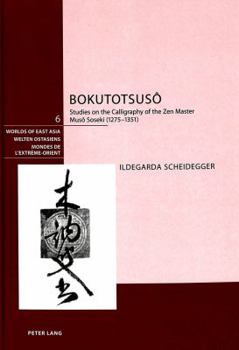Bokutotsusô: Studies on the Calligraphy of the Zen Master Musô Soseki (1275-1351)
Musô Soseki (1275-1351), one of the most important Zen patriarchs of the early fourteenth century in Japan, devoted his life to spreading Buddhist wisdom in his writings. As a member of the Gozan movement, he belonged to the literary elite and had a profound knowledge of Chinese und Japanese poetry. He left behind numerous calligraphies, among them those now housed in the temples Engakuji and Zuizenji in Kamakura and in Tenryûji and Saihôji in Kyoto. Musô signed many of his calligraphies with his pseudonym Bokutotsusô, which means «the wooden stutterer». Most of Musô's calligraphies are composed in cursive script and deal with themes of particular interest to him, such as nature and religious education. This book examines how these themes relate to the different stages of Musô's life. It also analyses his attitude toward calligraphy and the influence of other calligraphers on his artistic development. For this purpose, pivotal calligraphies that reveal Musô's stylistic development, his aesthetics and underlying message as well as the trajectory of his life have been chosen for closer examination. The research for this book was conducted at the temples that were at the center of Musô's activities. The first work to discuss Musô's calligraphy in a Western language, this book offers insights into his texts together with illustrations of Musô's brushwork.
Format:Hardcover
Language:English
ISBN:3039106929
ISBN13:9783039106929
Release Date:July 2005
Publisher:Peter Lang Group Ag, International Academic P
Length:214 Pages
Customer Reviews
0 rating





